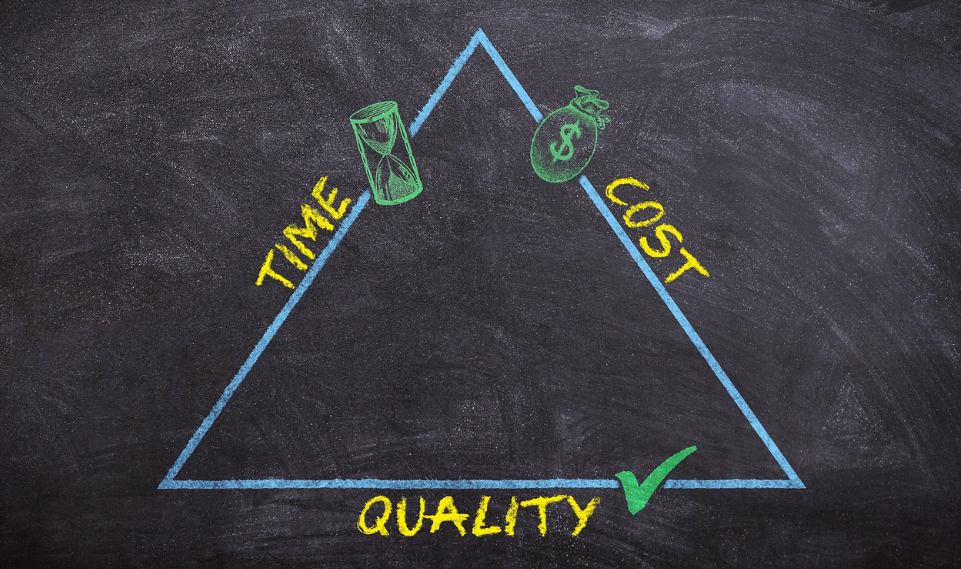A comprehensive analysis of costs is essential for the implementation of a marketing automation solution in companies. Cost types are often overlooked. We show you what you should consider.
The introduction of marketing automation promises companies a more efficient and targeted customer approach. The benefits are many, but before a company dives into the world of automated marketing processes, a thorough cost analysis is essential. We provide a brief checklist overview of the direct and indirect cost blocks to help companies estimate the costs of implementing marketing automation.
Marketing automation - the gold standard in customer relationship management
Marketing automation is a SaaS technology that enables companies to automate and optimise marketing processes. The aim is to increase the efficiency of all marketing processes, acquire new customers through lead generation and also improve customer loyalty among existing customers through improved and personalised communication (via email and the like) and thus ultimately increase the company's turnover.
Marketing automation solutions are software platforms such as HubSpot, Adobe Marketo, Oracle Eloqua or Salesforce Pardot, which marketing teams use to automate and optimise their campaigns and email communication in real time. In the last 10 years, marketing automation has massively advanced the marketing of many companies, supported the true partnership between marketing and sales and made the value contribution of marketing teams to sales measurable and specifically increaseable.

Marketing automation increases the quality of the customer approach many times over. However, all costs must be factored in.
A key aspect of marketing automation is the ability to scale personalised customer communication on a broad basis. By collecting data on customer behaviour, companies can create targeted messages and send them automatically to the right target groups. This ranges from personalised emails and social media posts to specific content on the company website.
- The process often begins with the collection of data on potential and existing customers. This data can be demographic, social or behavioural in nature. Marketing automation platforms provide tools to analyse this information to create detailed customer profiles. Based on these profiles, companies can then create automated marketing campaigns.
- One of the main benefits of marketing automation is the ability to manage the customer lifecycle. This means that organisations can automatically respond to customer interactions, be it visiting a website, opening an email or downloading content. By setting predefined rules, automated actions can be triggered, such as sending follow-up emails, offering discounts or moving customers to specific segmentations.
- Another important function is lead scoring, where potential customers are evaluated based on their behaviour. Points are awarded for actions that indicate intent to buy, such as viewing product demonstrations or visiting the pricing page multiple times. This allows the sales team to focus on the most promising leads and optimise the sales process.
- The integration of marketing automation with other systems, such as customer relationship management (CRM) and e-commerce platforms, is crucial. By sharing data between these systems, companies can gain a comprehensive picture of their customers and create seamless, personalised experiences.
Introducing marketing automation cost-effectively
Marketing automation is not limited to B2C companies, but is now widely used, especially in the B2B sector. The technology has become an integral part of modern marketing strategies and enables companies to work more efficiently, strengthen customer loyalty and ultimately increase their business success.
The market for marketing automation has long since become mainstream. Depending on the industry, around 50-80% of the top 10 providers are already using marketing automation and are moving through several learning curves and maturity levels. The pilot and pioneer phase is over. The software market is consolidating rapidly and manufacturers are slowly but measurably coming under pressure to acquire new customers. Customers can benefit from this - but those who have not yet implemented marketing automation may not yet recognise the benefits or have the necessary expertise to select and implement this basic technology.
Companies that have not yet implemented marketing automation in the 1920s make it clear by this fact alone that they are still at the beginning of their company's learning curve and, not infrequently, their digital marketing strategy. Many of these companies therefore have extreme knowledge gaps and no experienced personnel in their own ranks to select marketing automation in a targeted manner, introduce it cost-efficiently and utilise it optimally for the company's business.
This increases the number of incorrectly planned software implementations and entire cost blocks are often overlooked or underestimated. As a result, the return on investment of implementing marketing automation is massively underestimated.
Software licence costs: For many companies, the licence costs for using the software are the main consideration when introducing marketing automation. Licence costs are a significant cost factor in the implementation of marketing automation. Platforms such as HubSpot, Marketo and Oracle Eloqua offer various pricing models. The costs can vary depending on the range of functions, number of users and other features. It is important to carefully evaluate the needs of the organisation and choose the right platform accordingly.
Implementation costs: The implementation costs include the customisation and configuration of the selected software to the specific requirements of the company. Training for the team should also be considered to ensure that all employees can use the new tools effectively. As a rule, an experienced implementation partner is necessary and generates costs. Companies should only consider implementing any marketing automation alone and without a partner if they already have an experienced team of several people.
Integration costs: The costs of integrating marketing automation with systems such as websites and CRM must be taken into account. The roadmap for these integrations must be planned from the outset and must never be postponed to a later date. The marketing automation software simply has to work perfectly with other existing systems such as CRM (Customer Relationship Management) or email platforms right from the start. This may involve costs for the use of APIs (Application Programming Interfaces) and any necessary development work.
Therefore, choose an implementation partner who understands your entire tech stack in marketing, sales and customer service based on marketing automation. Such partners are relatively rare, but they can save you money by efficiently translating your business processes into cross-interface processes. Nowadays, you shouldn't invest any more money in the manual programming of fixed API interfaces. There is an easier way. Modern integration platforms such as Webmethods or Make.com enable fast, cost-effective and flexible software connections. However, neither the choice of software nor the necessary programming should be left to chance. Seek advice from an experienced partner such as Thought Leader Systems at an early stage.
Costs for data management and data migration: The transfer of existing data to the new marketing automation platform can also involve costs. It is important to ensure that this process runs smoothly to ensure data integrity and continuity.
Business consulting: The introduction of marketing automation is a software implementation that brings many new processes into the company and is associated with high business expectations. Often, however, the planned goals and the path to more customers and leads are not yet sufficiently defined. The software is then introduced, the team is trained and then the "iterative" search for the right customer approach, lead generation channels and cooperation with sales begins. This is a fatal mistake and it costs a lot of time and money.
When purchasing marketing automation software, companies must define their marketing plan, prepare campaigns and check with an experienced consulting partner how this can be realised as quickly and cost-effectively as possible with the selected software. After all, all marketing automation costs are included in the customer acquisition costs in financial terms. Good advice costs money here - but it is significantly more expensive to stumble into marketing automation without appropriate business advice, miss your own targets and leave the competition to find your own leads.
Personnel costs: The introduction of marketing automation may require changes in work processes, which may entail additional training or possibly even the recruitment of specialised staff.
Time and loss of productivity: Implementing marketing automation requires time and attention. During this time, productivity may be lost. It is important to take this factor into account when analysing costs in order to set realistic expectations.
Maintenance and updating: The ongoing costs of maintaining and updating the software should not be overlooked. It may also be necessary to allocate additional resources to fix bugs or adapt to changing business requirements.
Customisations and enhancements: Companies should be prepared for the fact that their requirements may change over time. Adding new features or adapting to the changing landscape of the organisation may incur further costs.
Marketing automation: estimating the costs in euros
To determine the amount of costs in euros, companies should take several factors into account. The size of the company plays a role, as larger companies tend to require more extensive software licences and more resources. Industry-specific requirements can also influence costs. It is important to assess the available resource pool and determine whether internal teams can handle the implementation or external expertise is required.
Conclusion: benefits outweigh the costs
There are undoubtedly costs involved in implementing marketing automation, but the long-term benefits can justify the investment. A careful cost analysis, taking into account both direct and indirect costs, allows organisations to set realistic budgets and better manage potential challenges. It is advisable to take time to compare different platforms and ensure that the chosen solution meets the specific requirements of the organisation.
Do you have questions about marketing automation? Get in touch with our experts! We will be happy to help you with any questions you may have.


